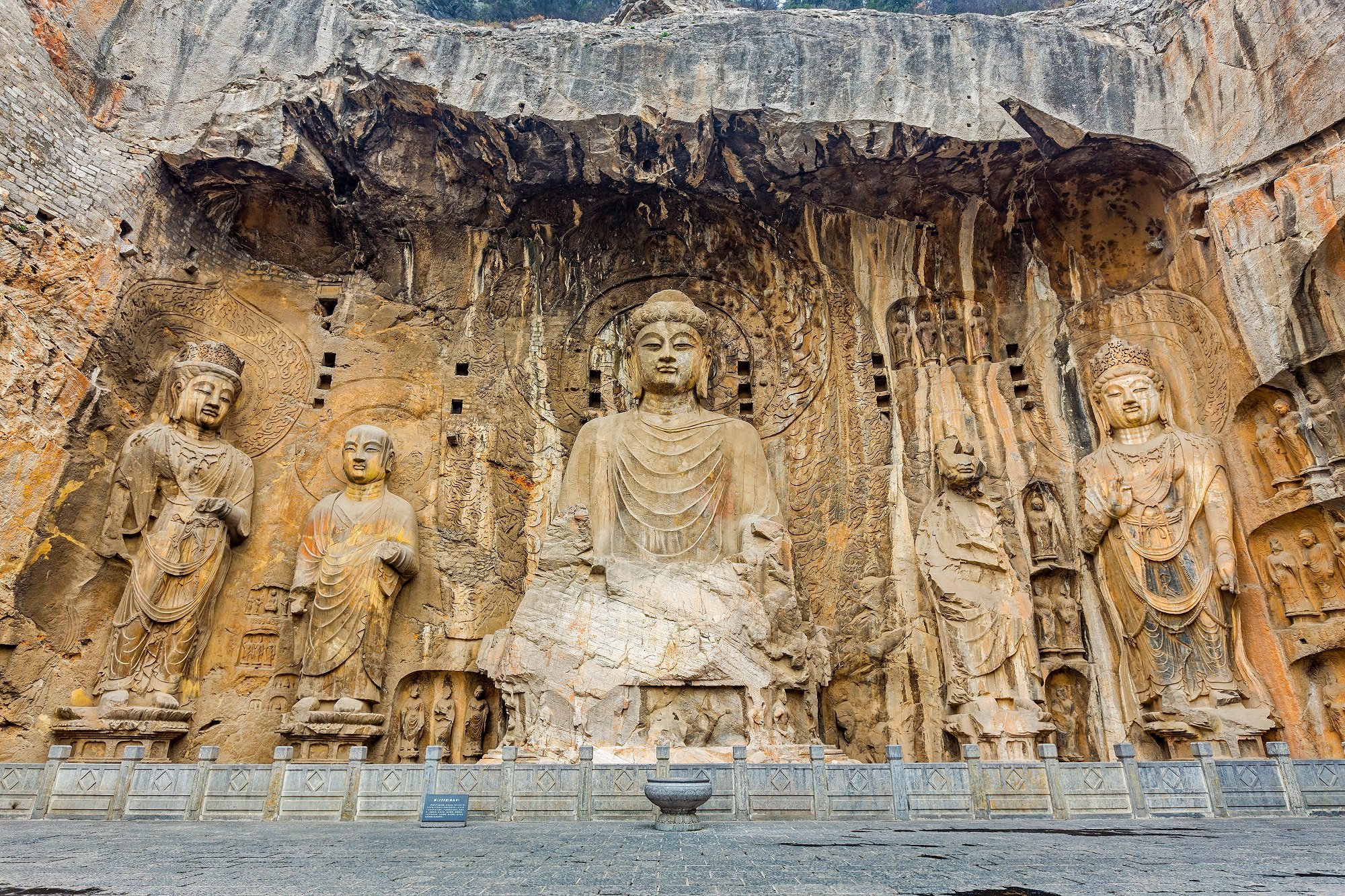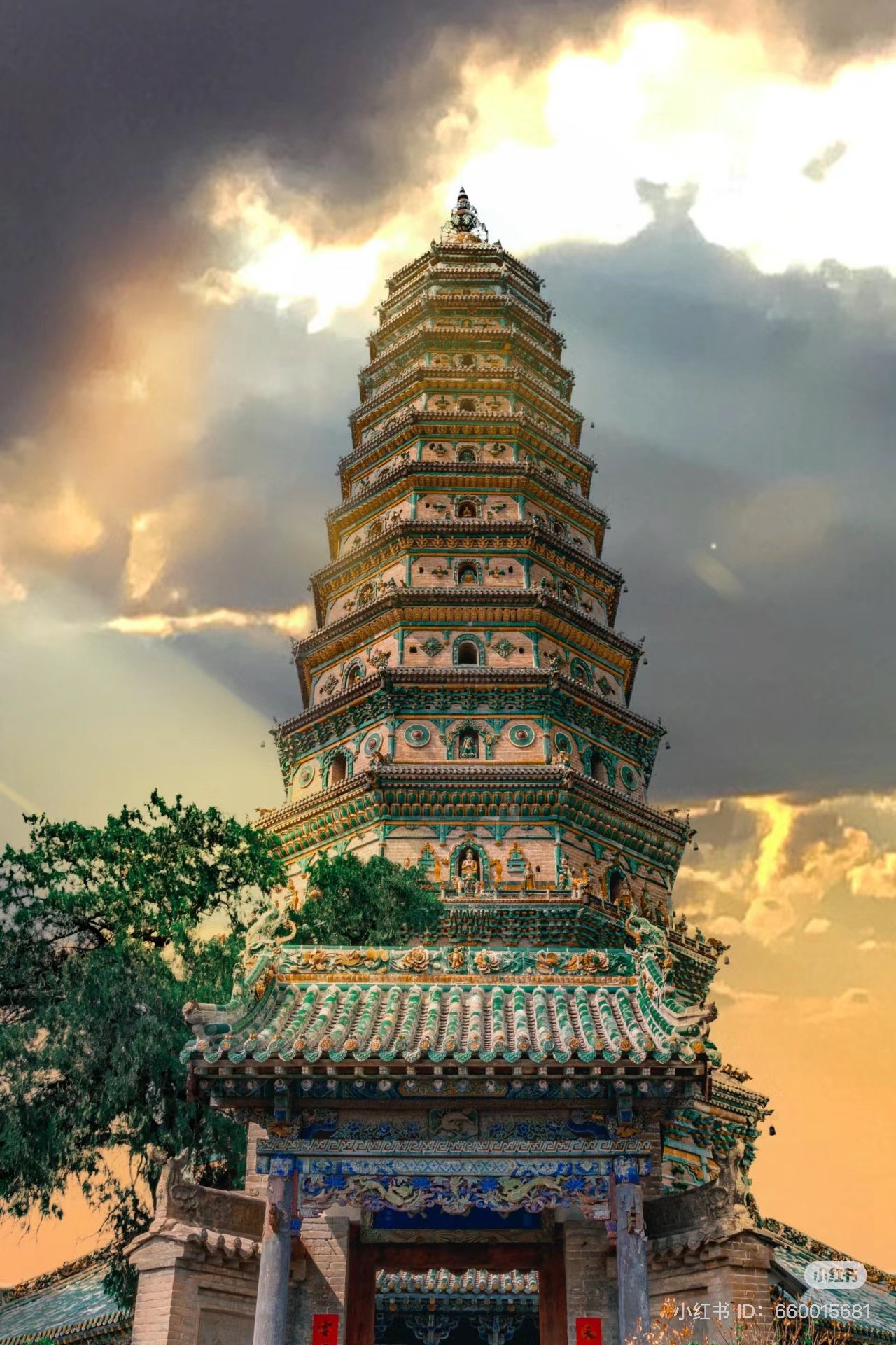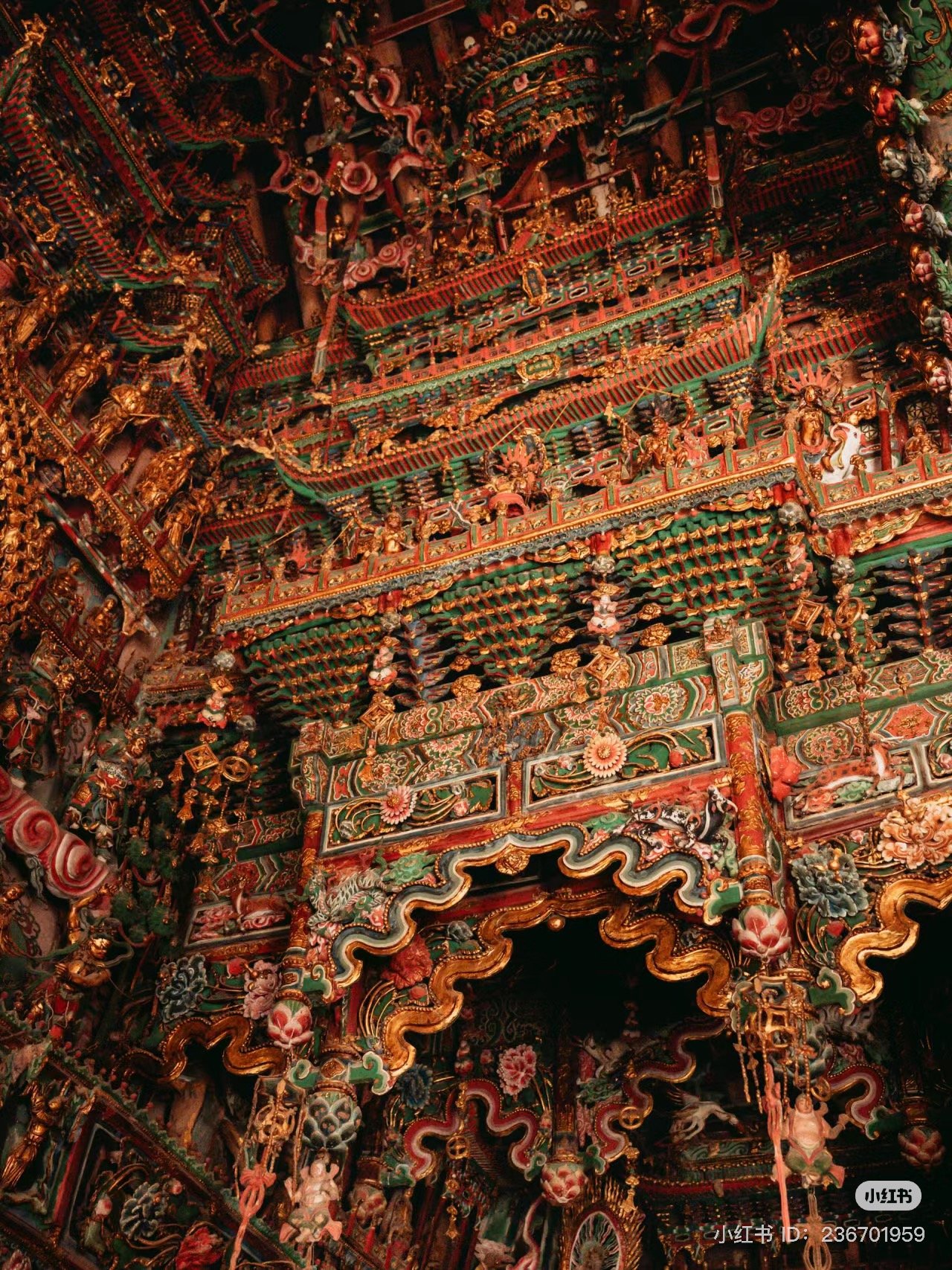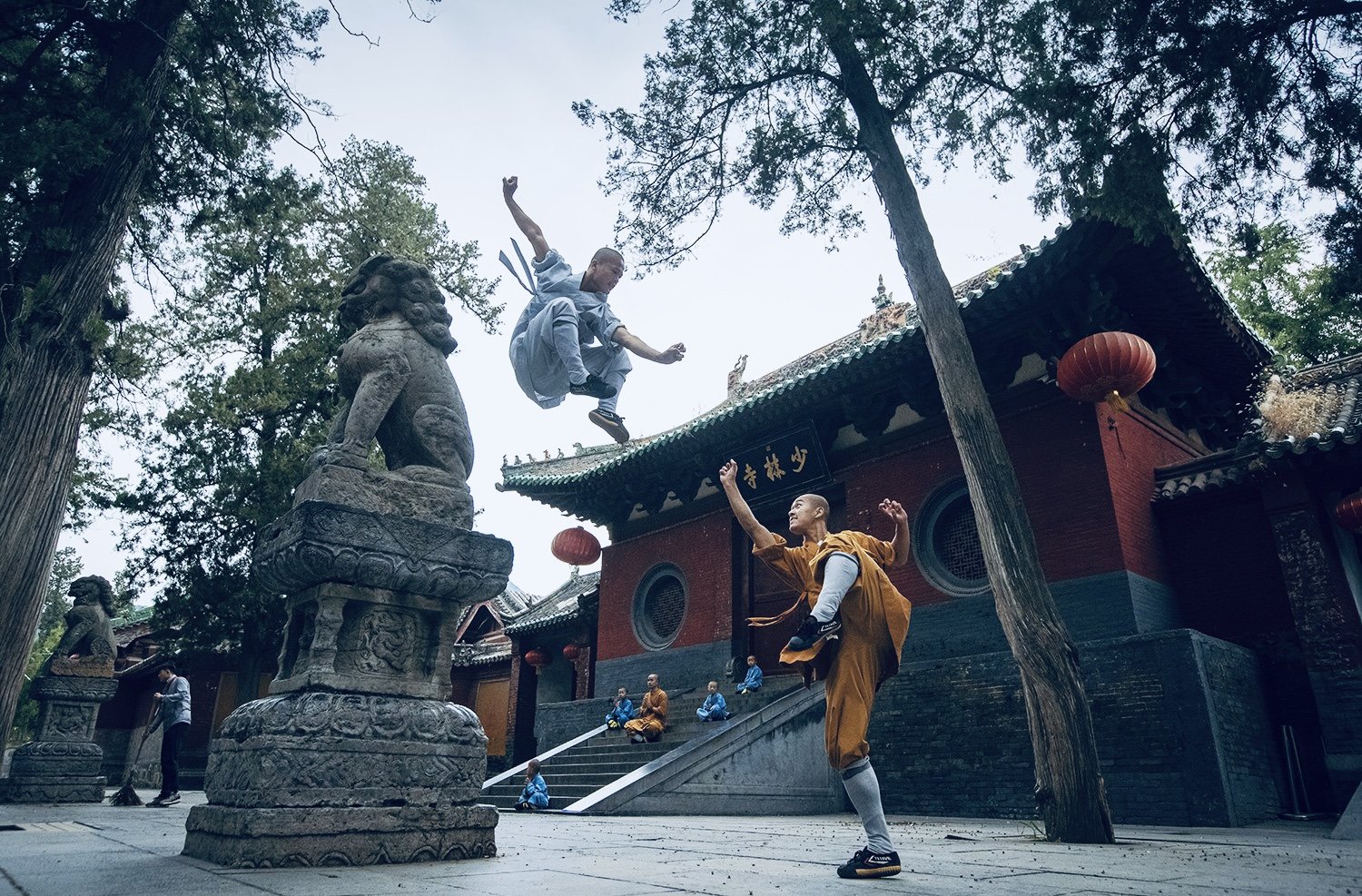
China Pilgrimage
中国五台山朝圣之旅
19th Oct - 2nd Nov, 2024
10月19日- 11月2日
Mt Wutai, Shaolin Temple, Longmen Grottoes etc. China
五台山、少林寺、龙门石窟等
China, with its rich tapestry of history and culture, offers a profound and immersive experience for Buddhist pilgrims. Embarking on a Buddhist pilgrimage in China provides a journey through sacred landscapes, ancient monasteries, and revered relics that are deeply intertwined with the country's spiritual heritage.
It is with great joy and reverence that we extend to you an invitation to join us on a profound spiritual journey through China’s most revered Buddhist sites. This pilgrimage offers a unique opportunity to deepen our understanding of Chinese Buddhism, engage in meditation, and explore the rich cultural and spiritual heritage of China.
中国拥有着悠久的历史与璀璨的文化,是一片承载着佛教朝圣者无尽虔敬与向往的土地。在这片圣土上开启佛教朝圣之旅,不仅是一次游历神圣山川、探访古老寺院的旅程,更是一次与珍贵圣迹进行心灵链接、启迪智慧的殊胜机缘。
怀着无上的喜悦与恭敬之心,我们诚挚地邀请您与我们同行,踏上这段通往中国最受崇敬的佛教圣地的朝圣之旅。在此次旅程中,您不仅可以更深入地体悟汉传佛教的精髓,也能让您通过禅修静定,探寻中国丰厚的文化底蕴与深邃的精神传承。
Details of the Pilgrimage 【朝圣之旅详情】:
Dates: 19th Oct - 2nd Nov, 2024 (a total of 15 days)
日期: 2024年10月19日至11月2日(共15天)
Detailed Schedule:
Day 1 (19th Oct) : We will meet at a hotel (太原三晋国际饭店) in Taiyuan, Shanxi province. (we will give the detail of the hotel later, so first make your way to Taiyuan)
Day 2 (20th Oct) : We will take a bus to Mt Wutai (about 3hrs drive) and stay there for four days and three nights.
Mount Wutai 五台山 (Shanxi Province): One of China’s Four Sacred Buddhist Mountains, the bodhimanda of Bodhisattva Manjushri. Mount Wutai is renowned for its five flat peaks and is a significant pilgrimage site for followers of the Chinese and Tibetan Buddhist tradition. The area is home to numerous ancient temples and monasteries.
详细行程:
第1天(10月19日): 于山西省太原市三晋国际饭店集合(敬请提前自行前往太原)。
第2 - 4天(10月20日至10月22日): 乘坐巴士前往五台山(车程约3小时),在五台山停留四天三夜。
五台山是中国四大佛教名山之一,亦是文殊菩萨的道场。此地以其独特的五座平顶山峰闻名,是汉传佛教与藏传佛教信徒的重要朝圣圣地。五台山广袤的山峦之间,坐落着众多古老的寺院与道场,承载着千百年来修行者的足迹与智慧。五台山并非一座山,它是坐落于“华北屋脊”之上的一系列山峰群,最高海拔3061米。五座山峰(东台望海峰、南台锦绣峰、中台翠岩峰、西台挂月峰、北台叶斗峰)环抱整片区域,顶无林木而平坦宽阔,犹如垒土之台,故而得名。五台山是中国唯一一个青庙(汉传佛教)黄庙(藏传佛教)交相辉映的佛教道场,现存宗教活动场所共86处,其中多敕建寺院,多朝皇帝前来参拜。著名的有:显通寺、塔院寺、菩萨顶、南山寺、黛螺顶、广济寺、万佛阁等。五台山是全国重点文物保护单位、国家AAAAA级旅游景区,也被列为世界文化遗产。
Day 5 (23rd Oct): After breakfast, we will take a car to visit the world famous Hanging Temple (Xuankong Temple 悬空寺) (about 2.5hr drive). We will have lunch near the Hanging Temple.
第5天(10月23日):早餐后乘车前往悬空寺(车程约2.5小时)
The Hanging Temple, or Xuankong Temple 悬空寺 is a temple built into a cliff (75 m or 246 ft above the ground) near Mount Heng in Hunyuan County, Datong City, Shanxi Province, China. The entire temple was built into a cliff face on the west side of Jinxia Gorge, approximately 75 meters (246 feet) above the ground. It relies on 27 wooden beams to support all the main temple buildings. The temple is also reinforced with iron chains and beams to enhance its stability. From a distance, it looks like it is hanging in the air. The Hanging Temple is recognized as a UNESCO World Heritage Site and is considered one of China's most iconic and awe-inspiring architectural wonders. It attracts visitors from around the world who marvel at its ingenuity and breathtaking location.
悬空寺始建于北魏后期(491年),距今已有一千五百多年,是佛、道、儒三教合一的独特寺庙。“悬空寺”建筑极具特色,以如临深渊的险峻而著称,素有“悬空寺,半天高,三根马尾空中吊”的俚语,以如临深渊的险峻而著称。悬空寺也被联合国教科文组织列为世界文化遗产。
In the afternoon, we will take a car from the Hanging Temple to the Wooden Pagoda of Ying County (应县木塔), also known as Shakyamuni Buddha’s Pagoda of Fogong Temple.
The Sakyamuni Pagoda of Fogong Temple (simplified Chinese: 佛宫寺释迦塔) of Ying County, Shanxi province, China, is a wooden Chinese pagoda. It is also known as the Wooden Pagoda of Ying County (Chinese: 应县木塔). It was constructed in 1056, during the second year of the Khitan-led Liao dynasty and was renovated and expended in 1195 during the sixth year of the Jin Dynasty. The pagoda was built by Emperor Daozong of Liao (Hongji).The pagoda, which has survived several large earthquakes throughout the centuries. It is the oldest existent fully wooden pagoda still standing in China.
下午乘车从悬空寺前往应县木塔,亦称佛宫寺释迦塔。 佛宫寺释迦塔,通称应县木塔,是中国现存最古老、最高的木塔。其确切建造年代无从考证,但可从其建筑风格和相关文物信息确认其建造时间在辽代,并且在金代、元代、明代和清代被多次修葺。该塔曾经历过数次大地震,并于1926年在军阀混战中被炮击,但塔身从未倾倒。该塔通高67.31米,主体结构全部为木质结构,塔身外看为五层,其中第一层至第四层内各建有一层作为上一层基座的暗层,塔顶为铁制塔刹。每层塔室内的内槽均安置有佛像,其中第一层的内槽安置有一尊高约10米的释迦造像,内壁还绘有壁画。由于应县木塔塔身结构过于复杂,全塔共计出现54种不同的斗拱类型。
Day 6 (24th Oct): After breakfast, we will visit the world famous Yungang Grottoes (云冈石窟). Stay there for lunch. After that, we will also visit Huayan Temple and Shanhua Temple.
第6天(10月24日):早餐后前往云冈石窟;午后参观华严寺和善化寺。
The Yungang Grottoes (云冈石窟), are ancient Chinese Buddhist temple grottoes built during the Northern Wei dynasty near the city of Datong in the province of Shanxi. They are excellent examples of rock-cut architecture and one of the three most famous ancient Buddhist sculptural sites of China. The others are Longmen and Mogao.
There are 53 major caves, along with 51,000 niches housing the same number of Buddha statues. Additionally, there are around 1,100 minor caves. A Ming dynasty-era fort is still located on top of the cliff housing the Yungang Grottoes.
The grottoes were excavated in the south face of a sandstone cliff about 2600 feet long and 30 to 60 feet high. In 2001, the Yungang Grottoes were made a UNESCO World Heritage Site. The Yungang Grottoes are considered by UNESCO to be a "masterpiece of early Chinese Buddhist cave art... [and] ...represent the successful fusion of Buddhist religious symbolic art from south and central Asia with Chinese cultural traditions, starting in the 5th century CE under Imperial auspices."It is classified as a AAAAA scenic area by the China National Tourism Administration.
云冈石窟位于中国山西省大同市西郊,主要建于北魏兴安二年(453年)到太和十九年(495年)间,是中国第一处由皇室显贵主持开凿的大型石窟。整个窟群分东、中、西三部分。东部的石窟多以佛塔为主,又称塔洞;中部“昙曜五窟”是云冈开凿最早,气魄最大的窟群;西部窟群时代略晚,大多是北魏迁都洛阳后的作品。石窟依山开凿,在武州河北岸东西绵延1公里,主要洞窟达51个(其中保存较好的约20个),整个窟群共有大小佛蹲1100多个,大小佛像51000多尊,最大佛像高达17米,最小佛像仅有2厘米高。最大石窟是第6窟(北魏孝文帝时开凿),由地面到窟顶高达20公尺。云冈石窟也被列为世界文化遗产。

Day 7 (25th Oct): After breakfast, we will visit Datong musuem (大同博物馆), and after that we will take the fast train from Datong to Hongdong Station (12:55pm -16:36pm), stay the night at Hongdong.
第7天(10月25日):早餐后参观大同博物馆,随后乘坐高铁从大同前往洪洞站(12:55 - 16:36),当晚入住洪洞。
Datong Museum: Housed in a contemporary building inspired by a dragon totem, this wonderful museum is chock-full of relics – religious, funereal, military, imperial and quotidian – dating from when Datong was a frontier known as Ping Cheng (平成), between the Chinese and the nomads of the Eurasian steppes, all the way through to the Ming and Qing dynasties.
Day 8 (26th Oct): After breakfast, we will take a car to Guangsheng Temple (50mins, arrive at 9am), after lunch visit Xiao Xi Tian (Little Western Pure Land Temple), (about 2hrs arrive at 2pm), finish at 4pm, go back to Hongdong (1.5hrs), stay the night at Hongdong.
第8天(10月26日):
早餐后,乘车前往广胜寺(约50分钟车程,9点到达)
午餐后参观小西天(约2小时车程,下午2点到达),随后返回洪洞(约1.5小时车程),入住洪洞过夜。
The Guangsheng Temple (Chinese: 广胜寺) is a Buddhist temple, located at the southern foot of Mt. Huoshan, 17 km northeast of Hongtong County, Shanxi, China. The temple was built in 147 and was changed to its present name in the Tang dynasty. It has three parts: the upper temple, the lower temple and the Shuishen Temple (Temple of Water God). The world-renowned drama murals from the Yuan dynasty are kept in the lower temple.
广胜寺位于山西省临汾市洪洞县县城东北17公里霍山脚下的佛教寺院。著名佛教大藏经赵城金藏就是出自广胜寺,1961年广胜寺被列入第一批全国重点文物保护单位。
Little Western Pure Land (Xiao Xi Tian) is famous for its hanging Pure Land arts and Buddhist sculptures.
隰县小西天,又名千佛庵,位于山西省临汾市隰县城西凤凰山巅,是一座佛教禅宗寺院,由明代东明禅师创建于明崇祯二年。初因大雄宝殿内有佛像千尊而得名,后因重门额题“道入西天”,又为区别城南另一座明代寺院“大西天”而更名“小西天”。
小西天的建筑风格及特点,可以用“小、巧、精、奇”四个字来概括。寺院布置得体。殿堂构造缜密,精雕细刻,“精”得细微,在建筑史上真可谓别具一格,独具特色。
小西天上院,是全寺的精华,正面是大雄宝殿,文殊、普贤两殿左右相峙。大殿内正面排列着五个相互连通的佛龛,“药师”“弥陀”“释迦”“毗卢”和“弥勒”等诸佛端坐莲台,各饰锦衣,神态自若,面容慈祥;十大弟子分站两旁,造型优美,生动传神,表情含蓄。殿南山墙上塑着“四方三圣”“四大天王”等佛教人物故事,殿北山墙上塑着须弥山上三十三层“仞利天”、佛传故事和释迦牟尼的本生传说。大梁上,八大金刚,梁间墙壁悬塑着富丽堂皇的“极乐世界”;众多的人面飞天、神鸟、孔雀、鹦鹉、仙鹤,游弋在飘渺的云头上,十二乐伎菩萨,身姿轻盈,往来自如地表演着“天界”歌舞。整个殿内,天宫楼阁,层层迭迭,粉彩妆銮,呈现出一派仙宫佛国的景象。


Day 9 (27th Oct): After breakfast, we take a fast train from Hongdong to Luoyang (9:39-14:38pm), after check in at the hotel, we will visit Longmen Grottoes at 4pm (10mins drive from the train station), we will stay til the evening in Longmen Grottoes (it closes at 9pm and it’s the most beautiful in the evening). We will have dinner at Longmen Grottoes and stay the night in Luoyang.
第9天(10月27日):早餐后乘高铁从洪洞至洛阳(9:39 - 14:38)。入住酒店后,下午4点前往龙门石窟(车程10分钟),晚餐在景区内享用,夜宿洛阳。
The Longmen Grottoes (Dragon's Gate Grottoes龙门石窟) or Longmen Caves are some of the finest examples of Chinese Buddhist art. Housing tens of thousands of statues of the Buddhas, Bodhisattvas and arahants. They are located in the ancient city of Luoyang (used to be the capital of ancient China) in Henan province. In 2000 the site was added to the UNESCO World Heritage List as "an outstanding manifestation of human artistic creativity," for its perfection of an art form, and for its encapsulation of the cultural sophistication of Tang China.
龙门石窟位于中国河南省洛阳市南郊12公里处的伊水两岸的龙门山和香山崖壁上[1],主要开凿于北魏至北宋的四百余年间,至今仍存有窟龛(或称壁龛)2100多个,造像10万余尊,碑刻题记3600余品,多在伊水西岸。数量之多位于中国各大石窟之首。其中“龙门二十品”是书法魏碑精华,唐代书法家褚遂良所书的“伊阙佛龛之碑”则是初唐楷书艺术的典范。龙门石窟是中国三大石刻艺术宝库之一,同时被誉为世界最伟大的古典艺术宝库之一,与甘肃敦煌莫高窟、山西大同云岗石窟等中国著名石窟列为世界文化遗产。
Day 10 (28th Oct): After breakfast, we will take a car to visit the world famous Shaolin Temple (1.5hrs drive), stay at Shaolin Temple for lunch, after lunch we will visit the White Horse Temple (the very first temple in China).
第10天(10月28日):早餐后,乘车前往少林寺(车程约1.5小时);午餐后,参观中国第一座寺庙——白马寺。
The Shaolin Temple 少林寺: The Shaolin Temple is one of the most famous and historically significant Buddhist monasteries in China. Located at the base of Mount Song in Henan Province, it was established in 495 CE during the Northern Wei Dynasty (with a history over 1500 years). The temple is renowned not just for its role in the spread of Chan (Zen) Buddhism, but also for its association with martial arts.
少林寺(Shaolin Temple),位于中国河南省郑州市登封市境内,嵩山景区包含三个景区, 而少林寺的“管理”权限也仅在其山门之内。始建于北魏太和十九年(495年),是孝文帝为了安顿印度高僧跋陀落迹传教而兴建的一座寺院,因坐落于嵩山腹地少室山茂密丛林之中,故名“少林寺”。少林寺不仅是禅宗的发祥地,还是中国功夫的发祥地,有“禅宗祖庭,功夫圣地”之称,被誉为“天下第一名刹”。因其历代少林武僧潜心研创和不断发展的少林功夫而名扬天下,素有“天下功夫出少林,少林功夫甲天下”之说。少林寺是世界文化遗产、全国重点文物保护单位、国家AAAAA级旅游景区。
The White Horse Temple 白马寺:The White Horse Temple is a Buddhist temple in Luoyang, Henan and it is the first Buddhist temple in China, having been first established in 68 AD under the patronage of Emperor Ming in the Eastern Han dynasty. Emperor Ming had a dream about the Buddha came into his palace one night. And he sent his people to search for Buddhist scriptures. On their way, they encountered two Indian Buddhist monks (Kasyapa Matanga and Dharmaratna) who happened to be on their way to China for the purpose of spreading the Dharma. So they brought all the Buddhist sutras, relics and statues of the Buddha with them on white horses. Please with their arrival in China, the Emperor built a temple in their honour and named it the White Horse Temple as an appreciation of the white horses that had carried the Buddhist sutras and monks. The monks resided there and translated the first sutra into Chinese - the Sutra of Forty-two Chapters (四十二章经).
白马寺(White Horse Temple)是中国佛教的发源地,始建于东汉永平十一年(公元68年),是佛教传入中国后兴建的第一座官办寺院,乃中国、越南、朝鲜、日本及欧美国家的“释源”和“祖庭”。白马寺把佛教传到了朝鲜、日本和东南亚,使佛教在亚洲得到普及,后来又进入欧美,成为世界各地佛教信徒参拜的圣地。因此20世纪末以来,日本捐资重修白马寺钟楼并立空海雕像;泰国、印度、缅甸政府相继出资于白马寺建造佛殿,使之成为全世界唯一拥有中、印、缅、泰四国风格佛殿的国际化寺院。韩国、新加坡、马来西亚均来此受戒,美国、德国、加拿大皆出席该寺方丈升任法会,作为国际化程度最高的寺院,白马寺可谓名副其实的“天下第一寺”。白马寺典藏文物主要有2颗释迦牟尼佛舍利、中华古佛、元代十八罗汉夹纻像等。



Day 11 (29th Oct): After breakfast we will visit Luoyang Museum (at 9am), and at 12pm, we will take a fast train from Luoyang to Shanghai (5hrs, 12:38-18:17pm), stay the night in Shanghai. (*You can end the tour here)
第11天(10月29日):早餐后,9点参观洛阳博物馆,12点乘高铁前往上海(车程约5小时,12:38 - 18:17),当晚入住上海。(您可选择在此结束行程)
Day 12 (30th Oct): We will visit Longhua Temple (龙华寺) and Jade Buddha Temple (玉佛禅寺) in Shanghai.
[*You can also choose to fly out here if you don’t want to join us for Zhenning Temple after.]
第12天(10月30日):参观上海的龙华寺和玉佛禅寺。
龙华寺位于上海市南郊龙华街道,是上海地区历史最久、规模最大的古刹。龙华寺的名称来源于佛经中弥勒菩萨在龙华树下成佛的典故。据传龙华寺是三国时期孙权为其母所建,距今已有1700多年。
玉佛寺位于上海市普陀区安远路170号,因寺内主要供奉玉佛而得名,因其属于禅宗临济法系,修习禅法,故又名玉佛禅寺。玉佛寺作为上海旅游的十大景点之一,它虽地处繁华的市区,却又闹中取静,被喻为闹市中的一片净土。玉佛寺创建人和首任住持是慧根法师。
[如果不打算继续前往真宁净寺,您可以选择在此飞离上海。]
Day 13 (31st Oct): We will take a fast train from Shanghai to Qingtian (08:26-11:50am), arrive at Zhenning Pure Land Temple for lunch and toured the temple. You can either stay at the temple or a hotel nearby. (To stay and eat at the temple is free, but it will be good if you can make offerings to the temple - how much is up to you.)
第13天(10月31日):乘高铁从上海前往青田(08:26 - 11:50),到达真宁净寺并在寺院用午膳,参观寺院。您可以选择住在寺院或附近酒店。(住寺院以及用膳免费,但建议随喜供养,金额自定。)
Day 14-15 (1st- 2nd Nov): Experience Temple life at Zhenning Pure Land Temple. Most likely we can meet Master Renshan at the temple. Depending on your visa duration, you can either leave Zhenning temple on 2nd Nov or 3rd Nov. Tour finished. You can make your own arrangement onwards. You can either stay on in Zhenning Temple or take a fast train to Shanghai or your other destination.
第14 - 15天(11月1日 - 2日):在仁山法师的真宁净寺体验寺院生活。
(根据您的个人情况,您也可以在上海选择提前结束此次行程。)
Cost/Investment:
If you don’t join us for the 1 day tour in Shanghai & Zhenning Temple:
RMB 9880 or
USD 1380 or AUD 2080
(Standard Twin Share)
RMB 11080 or
USD 1580 or AUD 2380
(Single Room)
If you stay the night in Shanghai & join us for the 2 temple tour:
RMB 10380 or
USD 1460 or AUD 2180
(Standard Twin Share)
RMB 11680 or
USD 1640 or AUD 2480
(Single Room)
(*only include accomodation on 29th Oct, not 30th.)
If you join us to Zhenning Temple after:
600 rmb extra for twin (85 USD or 126 AUD) or
700 rmb extra for single (100 USD or 148 AUD)
(include accomodation on 30th in Shanghai & fast train to Qingtian & food,
exclude fast train back to Shanghai) or
800 rmb extra (170 AUD or 112 USD)
(include fast train back to Shanghai)
*Food & accomodation in Zhenning Pure Land Temple is free, but we appreciate if you can make offerings to the temple.
The cost includes the booking of all your accomodation, food (3 vegetarian meals), transport and scenery tickets in China. It does not include your international flight and your arrival prior to Taiyuan. Payment should be made 14 days prior to your departure (we can accept different currencies through Wise, although we prefer RMB or AUD) . We won’t accept any application from 5th October onwards.
Things to note:
1) Please arrange your own tourist visa and flight to China. You can either do this by yourself or via a travel agent. It should be quite easy to apply for a tourist visa in China. We will meet at Taiyuan in China on 19th October.
2) Please make sure you install WeChat on your phone prior to enter into China, as in China this may be our only mean of communication, no social media (no Facebook & instagram), no gmail etc. work in China as we have our own social media etc. Please also install Alipay or WeChat pay and link it to your credit card prior to enter into China (most places in China use AliPay or WeChat Pay, you will find it’s much easier to go around China with this payment system in place). Check with your bank and make sure it works. Please make sure you also bring plenty of RMB (Chinese Yuan) with you just in case your card doesn’t work.
3) Please bring your own power adaptor to charge your phone (Type A & C in China).
4) Please take up your own travel insurance as we won’t be responsible for any injuries and other accidents (e.g. lose of valuable items etc). during this trip.
5) It’s autumn in China, so please bring some warm clothes. Can be a bit chilly in the mountain. Please travel light as we will be going to many different places, best with a light luggage (if you like to shop a lot, we can help you post everything to Shanghai and you can collect them in Shanghai). Please wear conservative clothes in the temple like shirts that cover properly and long pants. Please do not wear revealing clothes in the temple like shorts and skirts.
6) Due to there’s a lot of travelling, so we accept application from age group 9-69. However, if you are in good health and/or can be accompanied by friends and family members (and just do the activities at your own pace), we can also consider it.
行程费用:
如果您不参加上海一日游和真宁净寺行程:
标准双人间:RMB 9880 / USD 1380 / AUD 2080
单人间:RMB 11080 / USD 1580 / AUD 2380
如果您留宿上海并参加两个寺院的游览:
标准双人间:RMB 10380 / USD 1460 / AUD 2180
单人间:RMB 11680 / USD 1640 / AUD 2480
(*只包含10月29日的住宿,不含30日。)
如果您继续参加真宁净寺行程(即全部行程都参加):
双人间额外:RMB 600 (总数RMB10980) / USD 85 / AUD 126
单人间额外:RMB 700 (总数RMB12380)/ USD 100 / AUD 148
(包含10月30日的上海住宿、前往青田的高铁票及餐饮,不含返回上海的高铁票。)或加RMB 800 / USD 112 / AUD 170,包含回程高铁票。
(真宁净寺的食宿免费,但欢迎随喜供养。)
费用包括:
行程内所有的住宿、餐饮(3顿素食)、交通及景点门票。不包括国际机票及太原集合前的费用。出发前14天内付款,可微信支付宝支付人民币,也可支付澳币。我们将在10月5日后停止接受报名。
注意事项:
请自行办理中国旅游签证及航班,可通过旅行社或个人办理,签证申请相对简单。我们将于10月19日在太原集合。
请在入境前安装微信,作为在中国的主要沟通工具,中国不使用Facebook、Instagram或Gmail等社交平台。此外,建议提前安装支付宝或微信支付并绑定您的信用卡(中国大部分地方使用这两种支付方式)。请确保您的银行卡支持使用,并带足够的人民币以备不时之需。
请携带适合中国电源插头的充电器(中国使用A型和C型插头)。
请自行购买旅游保险,我们不对旅途中发生的伤害或物品丢失等意外负责。
中国正值秋季,天气凉爽,山区会较为寒冷,请带上保暖衣物。由于行程涉及多地移动,建议轻装出行。如您喜欢购物,我们可帮助将物品邮寄至上海。寺庙内请穿着保守,避免穿着短裤、短裙等暴露的衣物。
鉴于行程多次旅行,适合年龄为9至69岁。如果您健康状况良好或有家人朋友陪伴,也可适当放宽条件,并按个人节奏参与活动。

SIGN UP NOW





